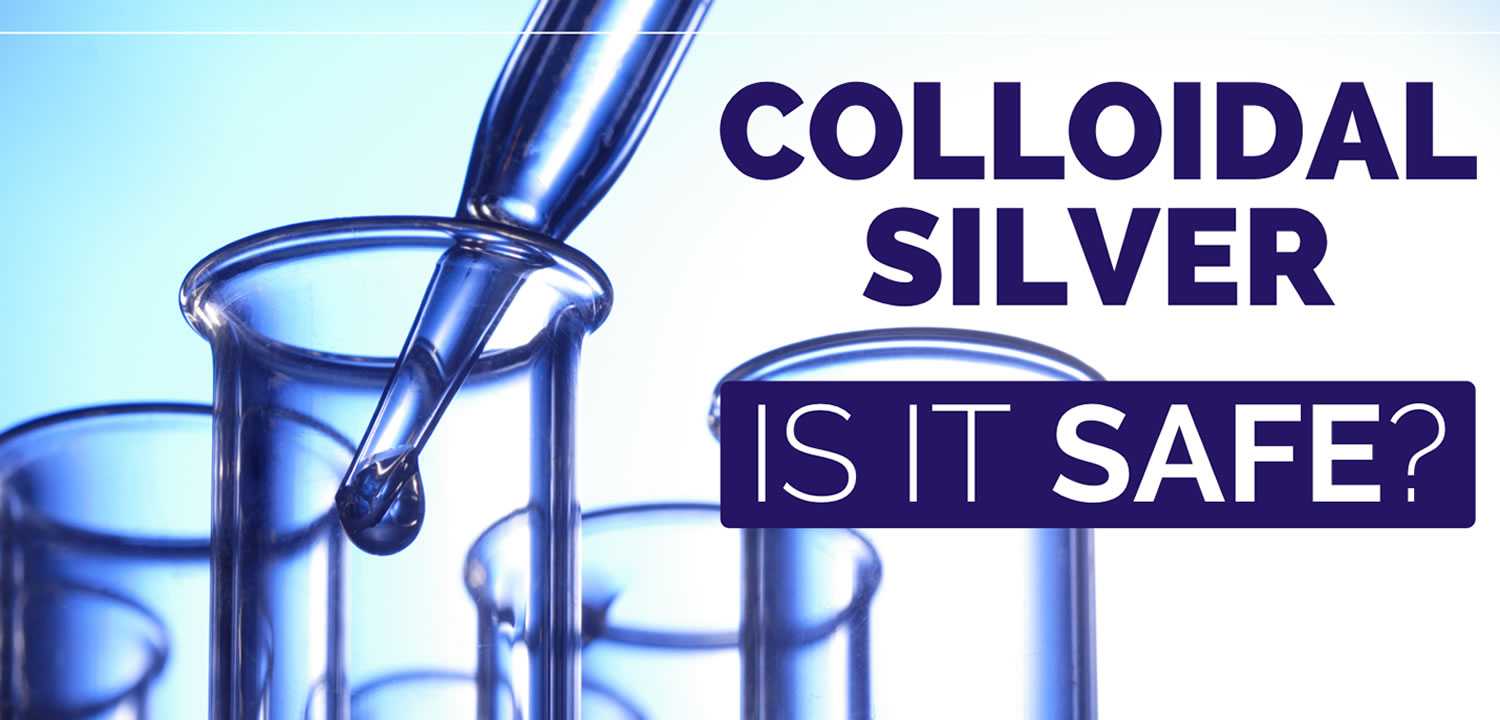What is colloidal silver
Colloidal silver consists of tiny silver particles in a liquid — the same type of precious metal used in jewelry, dental fillings, silverware, make photographs, in brazing alloys and other consumer goods 1). It’s sometimes promoted on the internet as a dietary supplement, but evidence supporting health-related claims is lacking.
Colloidal silver can be dangerous to your health. Silver has no known purpose in the body. Nor is it an essential mineral, as some sellers of silver products claim.
Silver is a naturally occurring element. It is found in the environment combined with other elements such as sulfide, chloride, and nitrate. Pure silver is “silver” colored, but silver nitrate and silver chloride are powdery white and silver sulfide and silver oxide are dark-gray to black. Silver is often found as a by-product during the retrieval of copper, lead, zinc, and gold ores.
People may be exposed to silver, usually in tiny amounts, through air, water, and food, and in certain activities such as jewelry-making or soldering.
Colloidal silver products are usually marketed as dietary supplements that are taken by mouth. Colloidal silver products also come in forms to be injected or applied to the skin. Manufacturers of colloidal silver products often claim that they are cure-alls, boosting your immune system, fighting bacteria and viruses, and treating cancer, HIV/AIDS, shingles, herpes, eye ailments and prostatitis.
However, no sound scientific studies to evaluate these health claims have been published in reputable medical journals. In fact, the Food and Drug Administration has taken action against some manufacturers of colloidal silver products for making unproven health claims 2), 3).
Topical silver (used on the skin) has some appropriate medical uses, such as in bandages and dressings to treat burns, skin wounds, or skin infections. It’s also in medicines to prevent conjunctivitis (an eye condition) in newborns. However, there are no legally marketed prescription or over-the-counter drugs containing colloidal silver that are taken by mouth.
Lastly, in 1999 the Food and Drug Administration (FDA) warned that colloidal silver isn’t safe or effective for treating any disease or condition. The FDA also issued a final ruling establishing that all over-the-counter (OTC) drug products containing colloidal silver ingredients or silver salts for internal or external use are not generally recognized as safe and effective and are misbranded. FDA is issuing this final rule because many OTC drug products containing colloidal silver ingredients or silver salts are being marketed for numerous serious disease conditions and FDA is not aware of any substantial scientific evidence that supports the use of OTC colloidal silver ingredients or silver salts for these disease conditions. This regulation is effective September 16, 1999 4).
Colloidal silver side effects
Animal studies have shown that swallowing silver results in the deposit of silver in the skin. One study in mice found that the animals exposed to silver in drinking water were less active than unexposed animals.
No studies are available on whether silver affects reproduction or causes developmental problems in people.
It’s not clear how much colloidal silver may be harmful, but it can build up in your body’s tissues over months or years. Most commonly, this results in ARGYRIA, a blue-gray discoloration of your skin, eyes, internal organs, nails and gums. While argyria doesn’t usually pose a serious health problem, it can be a cosmetic concern because it doesn’t go away when you stop taking silver products.
Rarely, excessive doses of colloidal silver can cause possibly irreversible serious health problems, including kidney damage and neurological problems such as seizures.
Colloidal silver products may also interact with medications, including penicillamine (Cuprimine, Depen), quinolone antibiotics, tetracycline and thyroxine (Unithroid, Levoxyl, Synthroid) medications.
How likely is silver to cause cancer ?
No studies are available on whether silver may cause cancer in people 5), 6). The only available animal studies showed both positive and negative results when silver was implanted under the skin.
The Environment Protection Authority (EPA) has determined that silver is not classifiable as to human carcinogenicity.
The EPA recommends that the concentration of silver in drinking water not exceed 0.10 milligrams per liter of water (0.10 mg/L) because of the skin discoloration that may occur.
The EPA requires that spills or accidental releases of 1,000 pounds or more of silver be reported to the EPA.
The Occupational Safety and Health Administration (OSHA) limits silver in workplace air to 0.01 milligrams per cubic meter (0.01 mg/m3) for an 8-hour workday, 40-hour workweek. The National Institute of Occupational Safety and Health (NIOSH) also recommends that workplace air contain no more that 0.01 mg/m3 silver.
The American Conference of Governmental Industrial Hygienists (ACGIH) recommends that workplace air contain no more than 0.1 mg/m3 silver metal and 0.01 mg/m3 soluble silver compounds.
References [ + ]





